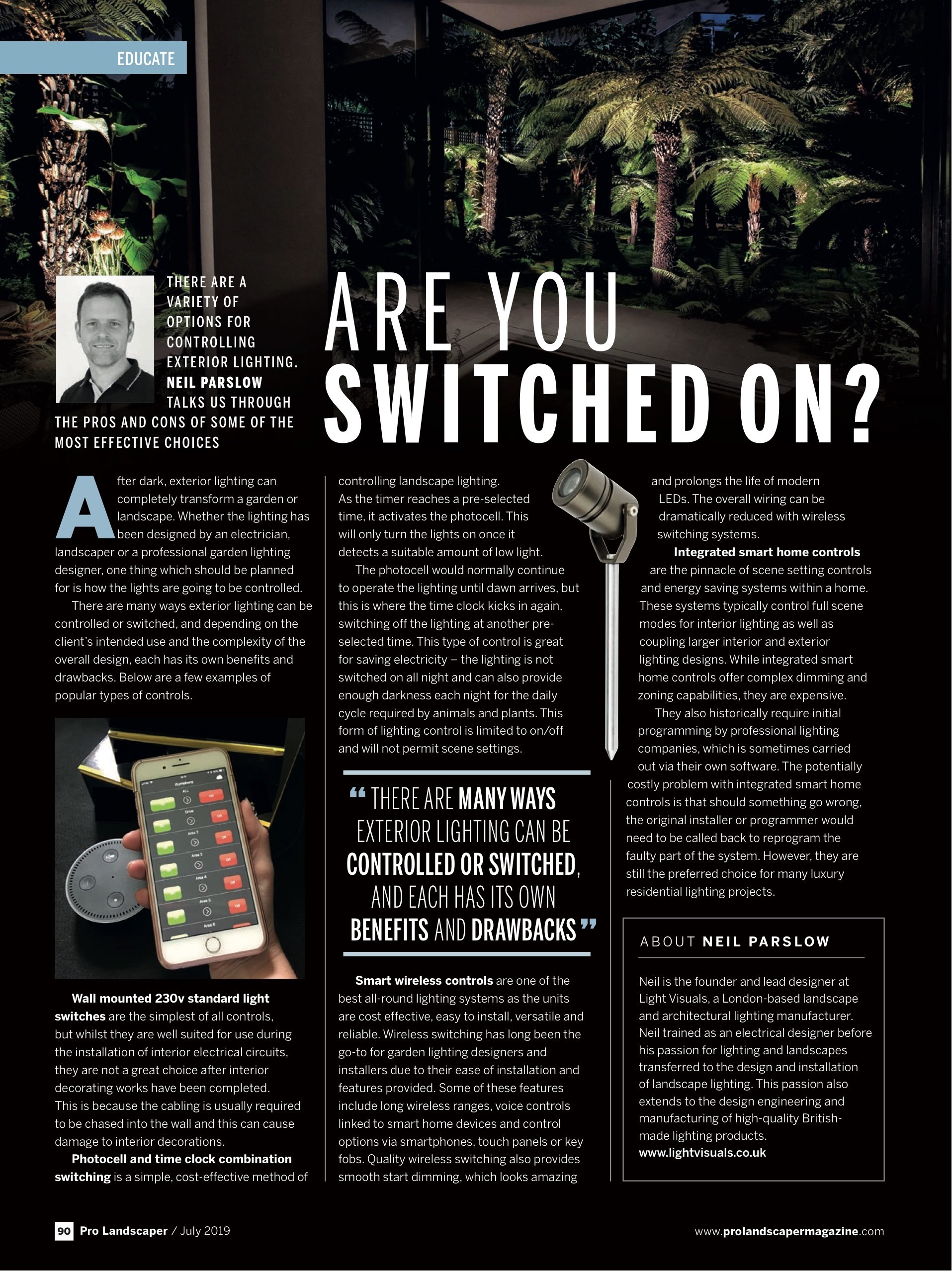Pro Landscaper Magazine July 2019 Are You Switched On?
Pro Landscaper Magazine July 2019 Are You Switched On?
THERE ARE A VARIETY OF OPTIONS FOR CONTROLLING EXTERIOR LIGHTING. NEIL PARSLOW TALKS US THROUGH THE PROS AND CONS OF SOME OF THE MOST EFFECTIVE CHOICES
After dark, exterior lighting can completely transform a garden or landscape. Whether the lighting has been designed by an electrician, landscaper or a professional garden lighting designer, one thing which should be planned for is how the lights are going to be controlled.
There are many ways exterior lighting can be controlled or switched, and depending on the client’s intended use and the complexity of the overall design, each has its own benefits and drawbacks. Below are a few examples of popular types of controls.
Wall mounted 230v standard light switches are the simplest of all controls,
but whilst they are well suited for use during the installation of interior electrical circuits, they are not a great choice after interior decorating works have been completed.
This is because the cabling is usually required to be chased into the wall and this can cause damage to interior decorations.
Photocell and time clock combination switching is a simple, cost-effective method of controlling landscape lighting. As the timer reaches a pre-selected time, it activates the photocell. This will only turn the lights on once it detects a suitable amount of low light.
The photocell would normally continue to operate the lighting until dawn arrives, but this is where the time clock kicks in again, switching off the lighting at another pre-selected time. This type of control is great for saving electricity – the lighting is not switched on all night and can also provide enough darkness each night for the daily cycle required by animals and plants. This form of lighting control is limited to on/off and will not permit scene settings.
THERE ARE MANY WAYS EXTERIOR LIGHTING CAN BE CONTROLLED OR SWITCHED, AND EACH HAS ITS OWN BENEFITS AND DRAWBACKS
Smart wireless controls are one of the best all-round lighting systems as the units are cost effective, easy to install, versatile and reliable. Wireless switching has long been the go-to for garden lighting designers and installers due to their ease of installation and features provided. Some of these features include long wireless ranges, voice controls linked to smart home devices and control options via smartphones, touch panels or key fobs. Quality wireless switching also provides smooth start dimming, which looks amazing and prolongs the life of modern LEDs. The overall wiring can be dramatically reduced with wireless switching systems.
Integrated smart home controls are the pinnacle of scene setting controls and energy saving systems within a home.
These systems typically control full scene modes for interior lighting as well as coupling larger interior and exterior lighting designs. While integrated smart home controls offer complex dimming and zoning capabilities, they are expensive.
They also historically require initial programming by professional lighting companies, which is sometimes carried out via their own software. The potentially
costly problem with integrated smart home controls is that should something go wrong, the original installer or programmer would need to be called back to reprogram the faulty part of the system. However, they are still the preferred choice for many luxury residential lighting projects.

